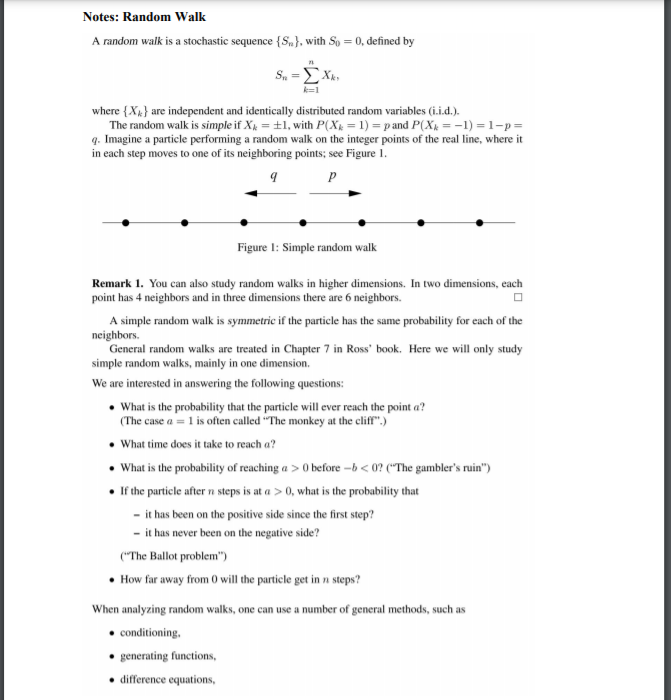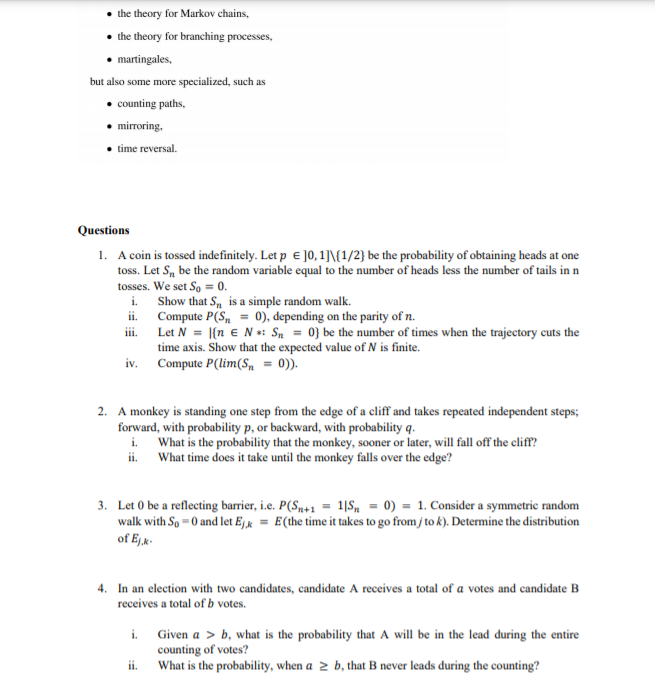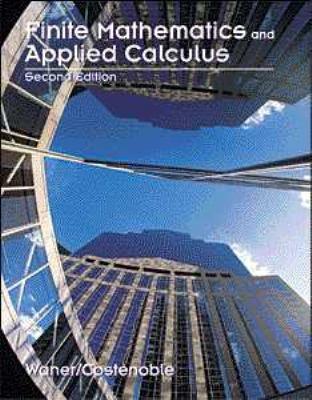please help me with this
Notes: Random Walk A random walk is a stochastic sequence {S,}, with So = 0, defined by Sn = XK. K=1 where { Xx} are independent and identically distributed random variables (i.i.d.). The random walk is simple if Xx = +1, with P(Xx = 1) = p and P(Xx = -1) =1-p= q. Imagine a particle performing a random walk on the integer points of the real line, where it in each step moves to one of its neighboring points; see Figure 1. P Figure 1: Simple random walk Remark 1. You can also study random walks in higher dimensions. In two dimensions, each point has 4 neighbors and in three dimensions there are 6 neighbors. 0 A simple random walk is symmetric if the particle has the same probability for each of the neighbors. General random walks are treated in Chapter 7 in Ross' book. Here we will only study simple random walks, mainly in one dimension. We are interested in answering the following questions: What is the probability that the particle will ever reach the point a? (The case a = 1 is often called "The monkey at the cliff".) . What time does it take to reach a? . What is the probability of reaching a > 0 before -b 0, what is the probability that - it has been on the positive side since the first step? - it has never been on the negative side? ("The Ballot problem") . How far away from 0 will the particle get in n steps? When analyzing random walks, one can use a number of general methods, such as * conditioning. . generating functions, . difference equations,. the theory for Markov chains, . the theory for branching processes, . martingales, but also some more specialized, such as . counting paths. * mirroring . time reversal. Questions 1. A coin is tossed indefinitely. Let p E ]0, 1]\\(1/2) be the probability of obtaining heads at one toss. Let S, be the random variable equal to the number of heads less the number of tails in n tosses. We set So = 0. i. Show that S,, is a simple random walk. ii. Compute P(S,, = 0), depending on the parity of n. ili. Let N = [{n E N .: Sn = 0) be the number of times when the trajectory cuts the time axis. Show that the expected value of N is finite. iv. Compute P(lim(S,, = 0)). 2. A monkey is standing one step from the edge of a cliff and takes repeated independent steps; forward, with probability p, or backward, with probability q. i. What is the probability that the monkey, sooner or later, will fall off the cliff? ii. What time does it take until the monkey falls over the edge? 3. Let 0 be a reflecting barrier, i.e. P(S,+1 = 1/5, = 0) = 1. Consider a symmetric random walk with So = 0 and let Ej k = E(the time it takes to go from / to k). Determine the distribution of Ej k- 4. In an election with two candidates, candidate A receives a total of a votes and candidate B receives a total of b votes. i. Given a > b, what is the probability that A will be in the lead during the entire counting of votes? ii. What is the probability, when a 2 b, that B never leads during the counting








